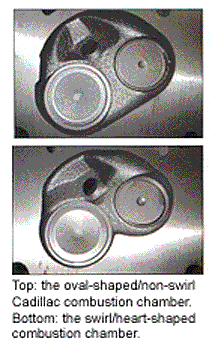In the quest to find the latest and greatest information about different casting identification, oddities and interchangeability to assist those within the engine remanufacturing or rebuilding industry, it is easy to lose sight of valuable information from the past. No, I am not talking about the ’50s and ’60s, although that may be an idea, but what seems to be the forgotten ’80s. So much changed during the 1990s, and the proliferation in the new millennium with electronic controls (both engine and transmission) and, of course, OBD have moved us ahead at a breakneck speed.
This month’s “Core Corner” is going to focus on the cylinder heads of an engine that was one of the ground breaking technological engines of it’s time, the aluminum block with free standing cylinders Cadillac 4.1L engine. The 4.1L engine as well as (its bigger brothers) the 4.5L and 4.9L were covered in great detail by Doug Anderson in a two part series in June and July of 1994 Automotive Rebuilder. Apparently though there are still a number of you building this engine since correct cylinder head application seems to continue to show up as an issue of confusion.

Let’s start with the fact that there are only two cylinder heads, one that has a somewhat oval combustion chamber (see illustrations above) that is commonly referred to as the “non-swirl” and produces a published 8.5:1 compression. The second head has a somewhat heart shaped combustion chamber and is referred to as the “swirl” head and produces 9.0:1 published compression. When using the non-swirl head in a swirl application it renders poor drivability issues and if the swirl is where a non-swirl should be you have detonation issues, neither of which are acceptable. The casting numbers used in the specific platform applications are in the chart provided in this article however, there are two particular casting numbers that seem to put the hurt on many. The combustion chamber is always the positive identifier.
Casting number 1628558 is one of the cylinder heads that is the “non-swirl” chamber and 1628556 is one of the casting numbers used for the “swirl” head. Any of us who have spent any time looking at GM cast iron heads and blocks all know that sixes and eights have been confused since the ’50s. Since the numbers are identical other than that last digit and the digits are either 6 or 8 I can only think of the loud scream words of Arsenio from Star Search “show me the digits!” Other than the combustion chamber the heads are identical. As you can see casting proliferation issues began way back in the ’80s and due care in identification is mandatory – not only then but even more so now. The chart (right) will assist in doing that.
As always, I hope this points you in the right direction, and helps you in avoiding “do overs.” For more extensive information of casting component identification I strongly suggest that you visit www.EngineDataSource.com and take a tour.
Also make certain to visit www.pera.org to purchase the PERA Engine Application and Identification Catalog or mail to [email protected].
Special thanks to Mike Bingham, a former GM Premium Powertrain engineer, who now works as a special projects consultant.
For technical questions, contact the Production Engine Remanufacturers Association (PERA) at: [email protected].













